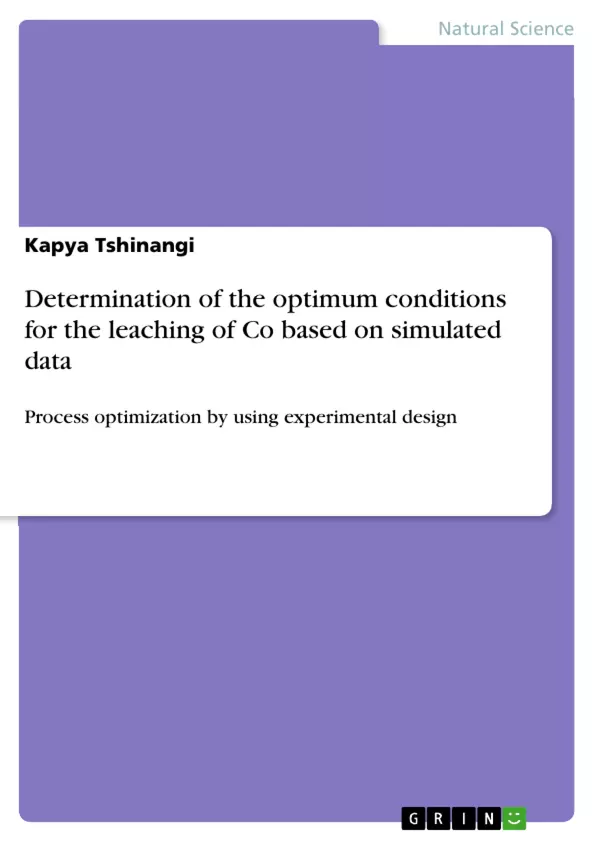In this work, we are interested in the formulation of a Pregnant Leaching Solution. There are many variables which affect the quality and production of the product, including time, percent solids, reducer concentration, tool materials, geometry of particles, etc. But for the model purpose we only consider two. The yield of this chemical process is being studied by taking in consideration two most important variables that are thought to be the pH and the reducing agent. Tree levels of each factor are selected, and a factorial experiment is performed based on simulated 'data' Process optimization by using experimental design. Consequently, companies are forced to operate by using the trial and error method. The optimization of controllable variables can make a considerable contribution towards solving the problem.
Inhaltsverzeichnis (Table of Contents)
- INTRODUCTION.
- Background..
- Objective(s).........
- Factors and Levels.
- TABLE OF CONTENTS
- Planned risk and simple size estimate...
- Selection, allocation of material
- Execution and analysis of experimental results.
- CONCLUSION AND PERSPECTIVES.
- LESSONS LEARNT.
- REFERENCES.
Zielsetzung und Themenschwerpunkte (Objectives and Key Themes)
This study aims to determine the optimal conditions for leaching cobalt from low-grade ores using simulated data and experimental design. The objective is to improve the efficiency and quality of cobalt extraction by identifying the key factors influencing cobalt recovery and optimizing their levels. The study focuses on the effects of two main variables: pH and reducing agent concentration.
- Optimization of cobalt leaching process
- Impact of pH and reducing agent concentration on cobalt recovery
- Analysis of experimental data using factorial design
- Determination of optimal operating conditions
- Application of statistical techniques like ANOVA
Zusammenfassung der Kapitel (Chapter Summaries)
- Introduction: This chapter presents the background and context of the study, focusing on the challenges and opportunities associated with leaching cobalt from low-grade ores. It introduces the concept of pregnant leaching solution and highlights the importance of optimizing process variables for improved cobalt recovery.
- Background: This chapter provides a detailed discussion on the concept of lixiviation, outlining the key steps involved in the leaching process and factors influencing the choice of leaching agents. It delves into the kinetics of lixiviation, explaining the importance of understanding reaction speed and the various steps involved in heterogeneous leaching reactions.
Schlüsselwörter (Keywords)
The main keywords and focus topics of this study include cobalt leaching, hydrometallurgical processes, experimental design, factorial design, ANOVA, pH, reducing agent, cobalt recovery, process optimization, and pregnant leaching solution.
- Quote paper
- Kapya Tshinangi (Author), 2019, Determination of the optimum conditions for the leaching of Co based on simulated data, Munich, GRIN Verlag, https://www.grin.com/document/511873



